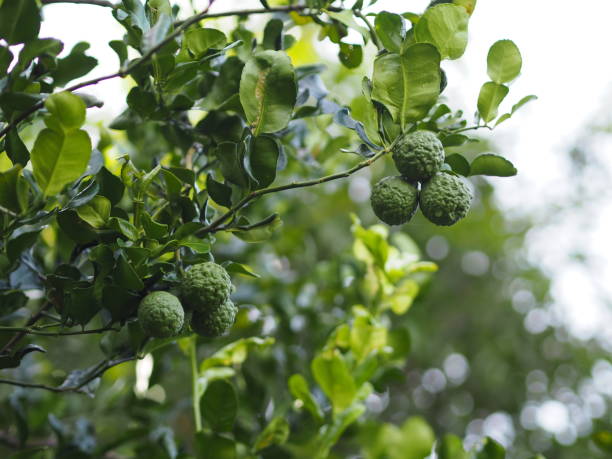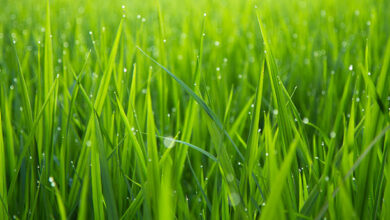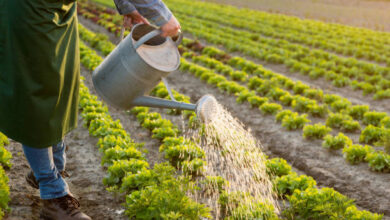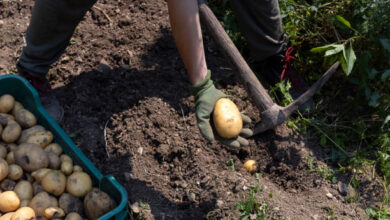
What to Plant with Bee Balm: All You Need To Know.
Bee balm is a favourite among gardeners for its vibrant blooms and ability to attract pollinators. But did you know that pairing it with the right companion plants can enhance its beauty and health? In this guide, we’ll explore what to plant with bee balm to create a thriving, beautiful garden that benefits from increased pollinator activity, natural pest control, aesthetic appeal, and improved soil health.
Understanding Bee Balm and Its Benefits
Bee balm, scientifically known as Monarda, is a showy perennial crop that attracts bees, butterflies, and hummingbirds with its bright, tubular flowers. This plant not only enhances the visual appeal of your garden but also supports a healthy ecosystem by attracting beneficial pollinators. Bee balm thrives in full sun to partial shade and prefers well-drained soil. It typically blooms from mid-summer to early fall, making it a standout in any garden.
- Scientific name: Monarda
- Pollinator attraction: Bees, butterflies, hummingbirds
- Benefits: Pollinator attraction, medicinal uses, aesthetic appeal
- Growth habits: Reaches heights of 2-4 feet
- Preferred growing conditions: Full sun to partial shade, well-drained soil
- Bloom time: Mid-summer to early fall
Companion Plants That Attract Pollinators
Pairing bee balm with other pollinator-friendly plants can create a vibrant and buzzing garden. Here are some excellent choices:
– Echinacea (Coneflower): With a similar bloom time, Echinacea attracts bees and butterflies and adds a splash of purple or pink to your garden.
– Rudbeckia (Black-Eyed Susan): These bright yellow flowers have a long blooming season and attract a variety of pollinators.
– Lavender: Known for its aromatic fragrance, lavender attracts bees while also repelling some pests.
Companion Plants for Pest Control
Certain plants can help control pests naturally, reducing the need for chemical interventions:
– Marigolds: These bright flowers repel aphids, nematodes, and other pests.
– Catnip: Effective at deterring mosquitoes, aphids, and squash bugs.
– Chives: Known to repel Japanese beetles and aphids, making them a great addition to your garden.
Companion Plants for Aesthetic Appeal
Enhance the visual appeal of your garden by pairing bee balm with these stunning plants:
– Phlox: With similar growing conditions and a variety of colours, Phlox complements bee balm beautifully.
– Yarrow: Its fern-like foliage and clusters of tiny flowers add texture and interest.
– Salvia: The spiky flowers of Salvia offer a striking contrast to bee balm’s tubular blooms and have a long blooming period.
Companion Plants for Soil Health and Growth Support
Some plants can improve soil health and support the growth of bee balm:
– Basil: Enhances soil fertility and repels pests, making it an excellent companion plant.
– Clover: Fixes nitrogen, improving soil structure and fertility.
– Borage: Attracts pollinators and improves soil health with its deep roots.
READ ALSO: When to Plant Potatoes in Texas: The Ultimate Guide.
READ ALSO: What Planting Zone is Missouri? Your Guide to Gardening Success
READ ALSO: WHAT DOES CALCIUM DO FOR PLANTS
Companion Plants Benefits:
Companion Plants That Attract Pollinators
– Echinacea (Coneflower)
– Benefits: Echinacea, also known as coneflower, is a magnet for bees and butterflies. Its long-lasting blooms provide a continuous source of nectar and pollen. The bright purple or pink flowers also add a vibrant splash of colour that complements bee balm, enhancing the visual appeal of your garden. Additionally, Echinacea is a hardy plant that can withstand a variety of growing conditions, making it a reliable companion.
– Rudbeckia (Black-Eyed Susan)
– Benefits: Rudbeckia, commonly known as Black-Eyed Susan, attracts a wide range of pollinators, including bees and butterflies, with its bright yellow flowers. It has a long blooming season, which ensures a steady supply of nectar throughout the summer. The contrasting colours of Rudbeckia and bee balm create a striking visual display in the garden. Moreover, Rudbeckia is easy to grow and maintain, adding both beauty and biodiversity to your garden.
– Lavender
– Benefits: Lavender is renowned for its aromatic fragrance, which not only attracts bees but also provides a calming scent in the garden. Its purple spikes complement the colourful blooms of bee balm, creating a visually appealing garden. Lavender also has pest-repelling properties, helping to keep harmful insects away from your plants. Furthermore, lavender’s drought tolerance makes it an excellent companion plant that requires minimal maintenance once established.
Companion Plants for Pest Control
– Marigolds
– Benefits: Marigolds are well-known for their ability to repel a variety of pests, including aphids, nematodes, and whiteflies. The strong scent of marigolds deters these pests, protecting your bee balm and other garden plants. Marigolds also add bright, cheerful colours to your garden with their yellow, orange, and red blooms. Additionally, they are easy to grow and can thrive in various soil conditions, making them versatile and beneficial companion plants.
– Catnip
– Benefits: Catnip is a natural deterrent for mosquitoes, aphids, and squash bugs, making it an excellent plant for pest control. Its aromatic leaves release compounds that repel these pests, providing a protective barrier for bee balm and other garden plants. Catnip also attracts beneficial insects such as bees and butterflies, enhancing pollination in your garden. Plus, it’s a hardy plant that can thrive in different environments, requiring little maintenance.
– Chives
– Benefits: Chives are effective at repelling Japanese beetles and aphids, which can be detrimental to garden plants. The pungent smell of chives deters these pests, reducing the need for chemical pesticides. Chives also produce attractive purple flowers that add a decorative touch to your garden and attract pollinators. Moreover, chives are edible and can be used in the kitchen, providing both culinary and pest control benefits.
Companion Plants for Aesthetic Appeal
– Phlox
– Benefits: Phlox offers a range of colours, including pink, white, purple, and red, which can beautifully complement the vibrant hues of bee balm. Its similar growing conditions make it an ideal companion, and its clusters of small flowers create a lush, full look in the garden. Phlox also attracts pollinators, adding ecological benefits while enhancing the garden’s aesthetic appeal. Additionally, it has a long blooming period, ensuring continuous colour throughout the season.
– Yarrow
– Benefits: Yarrow’s fern-like foliage and clusters of tiny flowers add texture and visual interest to the garden. Its flowers come in various colours, including white, yellow, pink, and red, which can harmonize with bee balm’s vibrant blooms. Yarrow is also drought-tolerant and low-maintenance, making it a practical addition to any garden. Furthermore, it attracts beneficial insects that help with pest control, adding another layer of benefit.
– Salvia
– Benefits: Salvia features spiky flowers that contrast beautifully with the tubular blooms of bee balm. Its long blooming period ensures continuous colour and interest in the garden. Salvia is also a favourite of pollinators, especially bees and hummingbirds, which helps enhance the pollination of bee balm and other plants. Additionally, Salvia’s aromatic foliage can help deter pests, providing both aesthetic and protective benefits.
Companion Plants for Soil Health and Growth Support
– Basil
– Benefits: Basil improves soil fertility by adding essential nutrients and organic matter as it decomposes. Its aromatic leaves repel pests such as mosquitoes and aphids, protecting bee balm and other garden plants. Basil also enhances the flavour of nearby vegetables, making it a popular choice for companion planting. Additionally, basil is easy to grow and can be harvested for culinary use, providing multiple benefits in the garden.
– Clover
– Benefits: Clover is a nitrogen-fixing plant, meaning it converts atmospheric nitrogen into a form that plants can use, enriching the soil naturally. This process improves soil fertility and structure, benefiting bee balm and other plants. Clover also acts as a ground cover, reducing weed growth and soil erosion. Its flowers attract pollinators, adding ecological benefits to the garden. Furthermore, clover is resilient and can thrive in various conditions, making it a reliable companion plant.
– Borage
– Benefits: Borage improves soil health with its deep taproots that help aerate the soil and bring up nutrients from deeper layers. It attracts pollinators with its star-shaped blue flowers, enhancing the pollination of bee balm and other plants. Borage also has pest-repelling properties, deterring pests like tomato hornworms. Additionally, its leaves can be used as mulch, further enriching the soil as they decompose.
Conclusion
By understanding what to plant with bee balm, you can create a garden that not only looks beautiful but also thrives with the help of beneficial pollinators, natural pest control, and improved soil health. Whether you’re looking to attract more bees and butterflies, deter pests naturally, enhance your garden’s aesthetics, or boost soil health, these companion plants are the perfect partners for your bee balm.
Try companion planting with bee balm, and share your experiences in the comments below. Don’t forget to share this post on social media to help fellow gardeners create their perfect garden.
By knowing what to plant with bee balm, you’ll be well on your way to a thriving, beautiful, and healthy garden.




